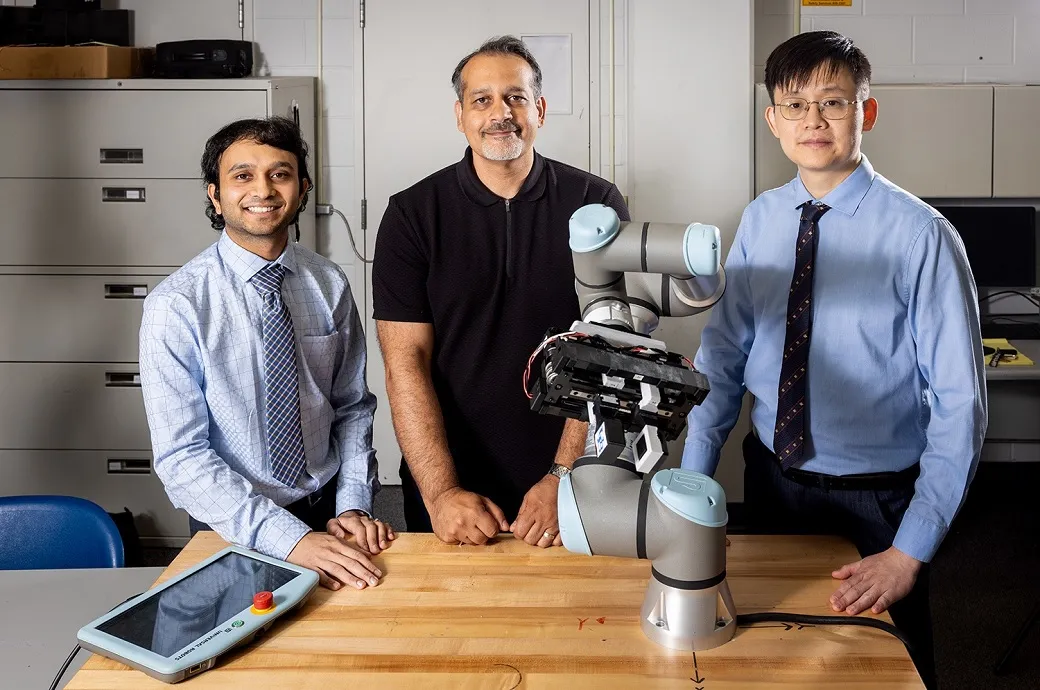Scientists at the University at Buffalo (UB) have unveiled an innovative electronic textile that mimics human skin’s ability to detect pressure and slippage—bringing robots closer to true tactile perception in real time.
A multidisciplinary research team led by Assistant Professor Jun Liu at the University at Buffalo (UB) has designed a new electronic textile (e-textile) that uses tribovoltaic principles to generate direct current (DC) from friction. This innovation enables robotic systems to detect movement, pressure, and slippage with near-human speed and precision.
In testing, the sensor was mounted onto 3D-printed robotic fingers, which were attached to a compliant robotic gripper developed by Associate Professor Ehsan Esfahani. During trials, the gripper responded instantly to slippage—tightening its grip when a copper weight was pulled away. The system demonstrated response times between 0.76 and 38 milliseconds, matching or exceeding the speed of human tactile receptors, which typically react within 1–50 milliseconds.
“This sensor functions like human skin — it’s flexible, highly sensitive, and uniquely capable of detecting not just pressure but also subtle slip and movement,” said Vashin Gautham, PhD candidate and lead author of the study.
Jun Liu added, “The system is incredibly fast and well within human performance benchmarks. What’s more, the stronger or faster the slip, the stronger the sensor’s response — making it easier to design control algorithms for precision robotics.”
The full findings were published on July 30, 2025, in Nature Communications. The study details how the slip-actuated tactile system mimics human mechanoreceptors by combining normal-force sensing with dynamic DC output via stretchable e-textiles.
The technology has wide-ranging applications, from robot-assisted manufacturing and packaging to surgical tools and next-generation prosthetics. Liu noted that the e-textile can play a vital role wherever human-robot collaboration requires delicate object handling.
Looking ahead, the research team plans to integrate reinforcement learning—a branch of artificial intelligence—to boost robotic dexterity and adaptability in real-world tasks.
The project received funding from the University at Buffalo Center of Excellence in Materials Informatics.
Quick Overview
| Feature | Details |
|---|---|
| Sensor Technology | Tribovoltaic effect (DC generated from friction) |
| Response Time | 0.76–38 ms (faster or equal to human touch sensors) |
| Key Demonstration | Gripper auto-tightened when copper weight began to slip |
| Hardware Setup | 3D-printed fingers + compliant robotic gripper developed at UB |
| Use Cases | Robotics, prosthetics, surgical tools, manufacturing automation |
| Next Phase | AI integration using reinforcement learning for enhanced control & dexterity |
This innovation represents a major step forward in robotics, tactile sensing, and human-machine interaction, offering machines a refined, responsive sense of touch that closely emulates the human hand.






